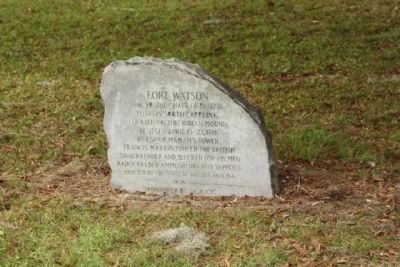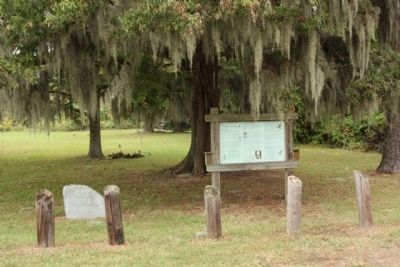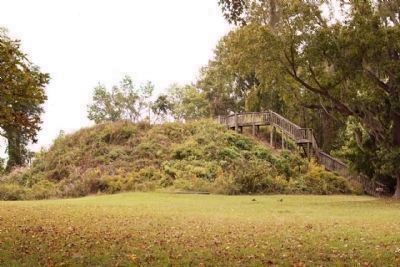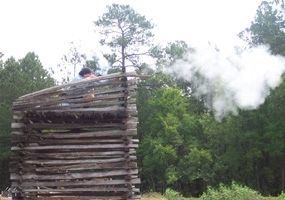Summerton in Clarendon County, South Carolina — The American South (South Atlantic)
Fort Watson
Erected 1950 by the State of South Carolina and the South Carolina Daughters of the American Revoluion.
Topics and series. This historical marker is listed in these topic lists: Forts and Castles • Patriots & Patriotism • War, US Revolutionary. In addition, it is included in the Daughters of the American Revolution series list. A significant historical date for this entry is April 15, 1781.
Location. 33° 32.339′ N, 80° 26.206′ W. Marker is in Summerton, South Carolina, in Clarendon County. Marker is on Fort Watson Road (State Highway 14-803) one mile west of St Paul Road (U.S. 15/301), on the left when traveling west. Touch for map. Marker is at or near this postal address: 2125 Fort Watson Rd, Summerton SC 29148, United States of America. Touch for directions.
Other nearby markers. At least 8 other markers are within 7 miles of this marker, measured as the crow flies. Santee National Wildlife Refuge (a few steps from this marker); Swamp Fox (approx. half a mile away); 2nd Battle of Fort Watson (approx. half a mile away); a different marker also named Fort Watson (approx. half a mile away); Fort Watson: (approx. 0.8 miles away); Liberty Garden (approx. 3.6 miles away); Liberty Hill Church / Pioneers in Desegregation (approx. 4˝ miles away); Anne Custis Burgess (approx. 6.6 miles away). Touch for a list and map of all markers in Summerton.
Related marker. Click here for another marker that is related to this marker.
Also see . . . National Register Properties in South Carolina, Santee Indian Mound and Fort Watson. Santee Indian Mound was part of a mound village complex; it was probably a burial and/or temple mound, likely constructed in some cultural period between 1200-1500 AD. Santee Indian Mound and a probable low earthwork remain intact except for the superposition of eighteenth-century fortifications on top of the mound. The fortification, British Revolutionary War post Fort Watson, was built from 30 to 50 feet high atop the mound.
In 1780, Francis Marion and Light Horse Harry Lee decided to capture the fort. Bombardment was out of the question, for the Americans were without artillery, but Colonel Maham, one of Marion’s officers, proposed building a log tower higher than Fort Watson. Hidden by trees, men hewed logs and the tower was erected in a single night. At dawn a shower of lead poured down into the enemy enclosure, effecting a quick victory. Fort Watson was the first fortified British military outpost in South Carolina recaptured by patriot forces after the British occupation of 1780.
There are no remains of Fort Watson on the site. Listed in the National Register July 29, 1969. (Submitted on November 13, 2009.)
Credits. This page was last revised on July 8, 2023. It was originally submitted on November 10, 2009, by Mike Stroud of Bluffton, South Carolina. This page has been viewed 1,769 times since then and 28 times this year. Last updated on July 6, 2023, by C Summers of Manning, South Carolina. Photos: 1, 2, 3, 4. submitted on November 10, 2009, by Mike Stroud of Bluffton, South Carolina. • Bernard Fisher was the editor who published this page.



